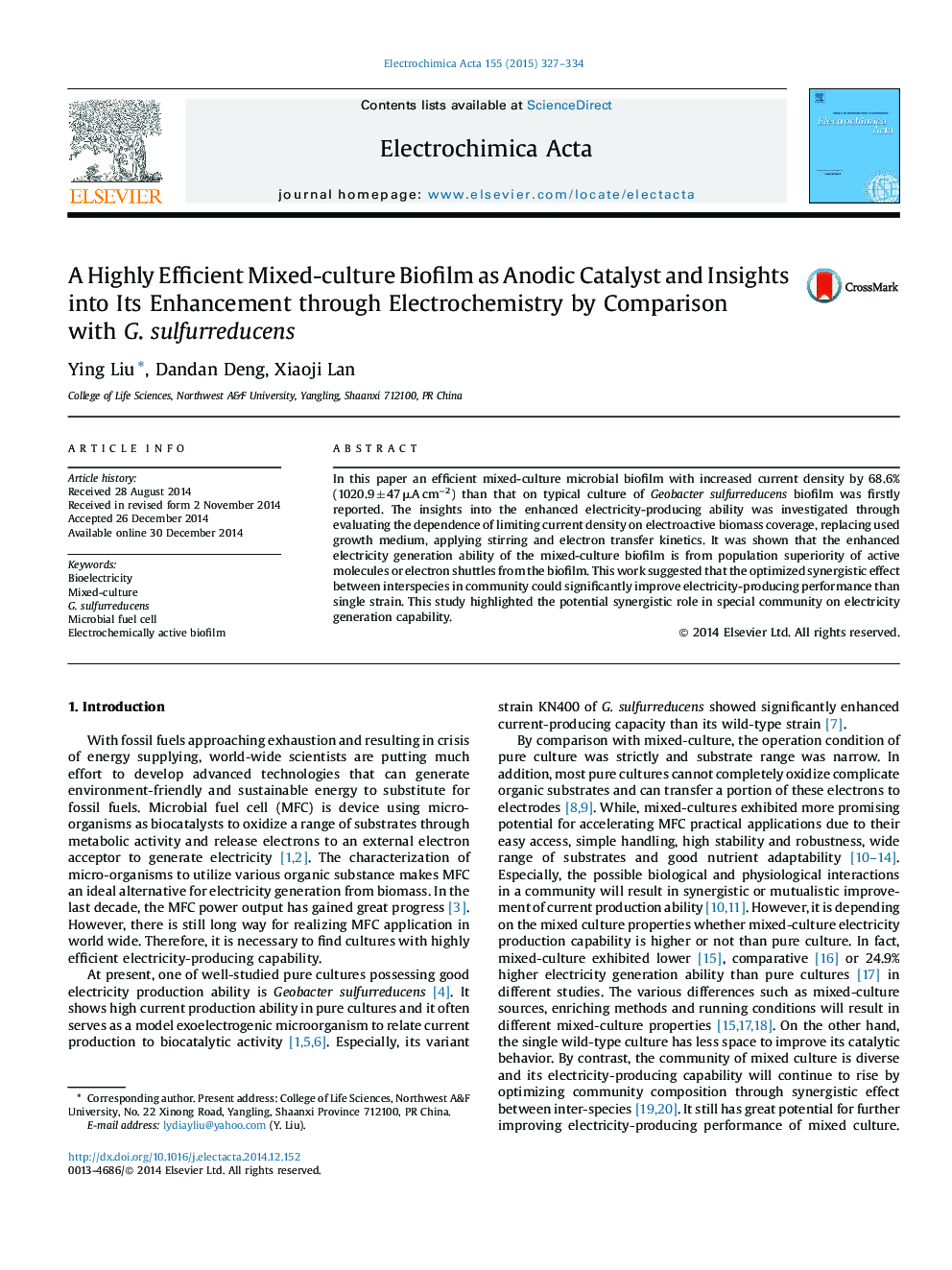| Article ID | Journal | Published Year | Pages | File Type |
|---|---|---|---|---|
| 184582 | Electrochimica Acta | 2015 | 8 Pages |
•A mixed-culture biofilm with 68.6% higher current than Geobacter sulfurreducens was firstly reported, while G. sulfurreducens biofilm showed five-time higher apparent affinity than the mixed-culture.•The mixed-culture biofilm showed surface-controlled process, while diffusion-controlled process was obtained for G. sulfurreducens as at certain accelerating scan rates.•When the used medium was replaced with the fresh, decrease percentage of currents for both kinds of biofilms is similar (50%).•A suitable community will be an alternative for improving MFC performance.
In this paper an efficient mixed-culture microbial biofilm with increased current density by 68.6% (1020.9 ± 47 μA cm−2) than that on typical culture of Geobacter sulfurreducens biofilm was firstly reported. The insights into the enhanced electricity-producing ability was investigated through evaluating the dependence of limiting current density on electroactive biomass coverage, replacing used growth medium, applying stirring and electron transfer kinetics. It was shown that the enhanced electricity generation ability of the mixed-culture biofilm is from population superiority of active molecules or electron shuttles from the biofilm. This work suggested that the optimized synergistic effect between interspecies in community could significantly improve electricity-producing performance than single strain. This study highlighted the potential synergistic role in special community on electricity generation capability.
Graphical abstractFigure optionsDownload full-size imageDownload as PowerPoint slide
